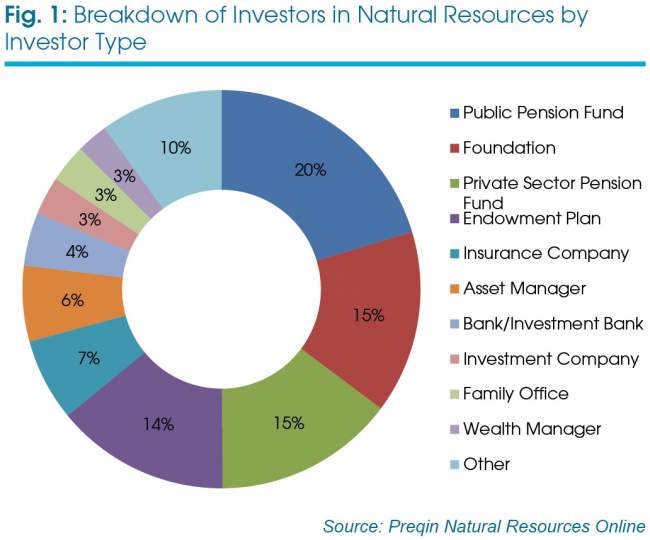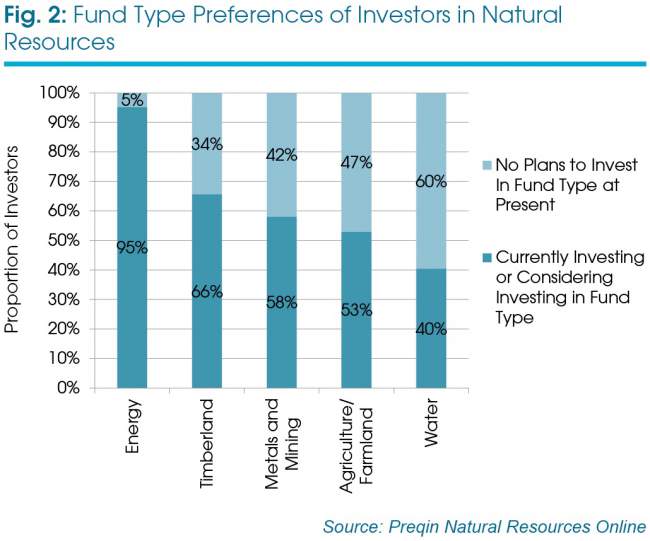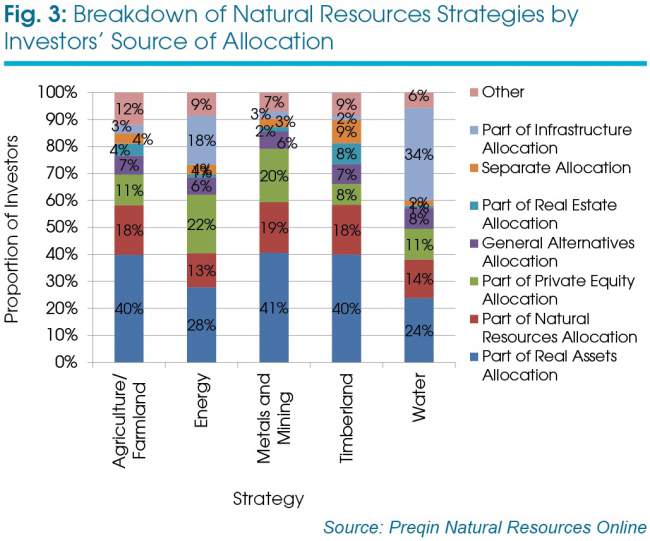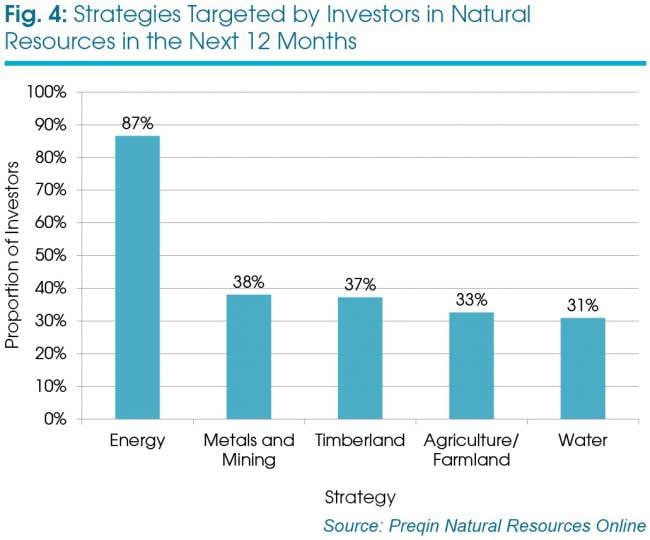This article, taken from the newly released Preqin Special Report: Natural Resources, looks at the make-up of institutional investors in natural resources, preferred strategies and regions, sources of allocations and future investment plans.
The increasing amount of capital raised by natural resources funds in recent years indicates healthy investor appetite for the asset class. As previously mentioned, a Preqin survey in June 2015 found that 29 per cent of investors in natural resources planned to increase their exposure to the asset class over the long term, compared with only 12 per cent that planned to reduce their allocations. Preqin’s Natural Resources Online database has detailed profiles for over 1,200 investors in natural resources. In this section, we take a closer look at these investors: the types of investors that allocate to natural resources, their investment preferences and how these investments fit within their overall portfolios.
The investor universe
The majority of investors allocating to natural resources are based in North America (64 per cent), perhaps unsurprising considering the maturity of the industry in the region. Twenty-five percent of investors are based in Europe, while only 4 per cent are based in Asia and 7 per cent in other regions.
In line with their role as major investors in other alternative asset classes, public pension funds represent the single largest group of investors in natural resources, representing 20 per cent of investors tracked by Natural Resources Online (Fig 1). Foundations (15 per cent), private sector pension funds (15 per cent) and endowment plans (14 per cent) are also prominent investors in natural resources. Together, these institutions account for 64 per cent of investors in the asset class. The potential low correlation of natural resources investments to public equity and debt markets may particularly appeal to institutions with long-term liabilities that are better able to ride out short-term fluctuations in commodities prices.
Strategy preferences
While there are large and growing numbers of investors seeking to invest in natural resources, they differ considerably in their investment preferences, with only 6 per cent of those that have expressed a preference investing across all five natural resources strategies. Fig 2 shows, as might be expected given the relative size of the energy market, that the majority of investors in natural resources that have made clear their position either invest, or are considering investing, in energy (95 per cent). A substantial proportion of investors would invest in timberland (66 per cent), metals & mining (58 per cent) and agriculture/farmland (53 per cent). Interestingly 40 per cent of investors currently invest, or are considering investing, in water – a significant proportion for a fund strategy that has only entered the mainstream comparatively recently.
Sources of allocations
When it comes to portfolio construction, a relatively low proportion of investors have a separate allocation to natural resources as an asset class (17 per cent). The majority of investors make investments from broader allocations, with investments most frequently being considered part of the investor’s real assets (26 per cent) or private equity (19 per cent) allocation. The source of allocation chosen is also linked with the range of strategies invested in as there are significant variations between these strategies and how they are viewed by investors.
Fig 3 shows a breakdown of investors’ sources of capital for each individual strategy. Comparatively few investors maintain an individual allocation to each of the strategies; this is most common with timberland, with 9 per cent of investors maintaining a separate allocation to the strategy. Investors treat agriculture/farmland, metals & mining and timberland in a similar manner, mostly viewing these as part of their real assets, natural resources or private equity allocations. Substantial proportions of investors in energy and water regard these as part of their infrastructure allocation, with 18 per cent and 34 per cent of investors in energy and water respectively making investments from their infrastructure allocation. This could reflect the opportunity to gain exposure to the performance of these sectors by investing in infrastructure projects such as pipeline construction and operation.
Future plans
Despite recent pressures on certain commodities prices, investor interest in further investment in the natural resources sector remains high. Natural Resources Online currently details specific plans for over 125 investors planning to invest, or considering investing, in natural resources over the next 12 months. On average, these investors are looking to make between two and three investments and commit USD20-80 million over the next 12 months. Interestingly, the two fund types most targeted by investors are energy (87 per cent) and metals & mining (38 per cent) (Fig 4), those that have been hit hardest by recent price declines, possibly suggesting that these investors believe that private fund managers will be well positioned to source new opportunities as energy and mining majors offload assets to cope with financial pressures.
Investors seem to recognise the benefits of regional diversification as 60 per cent are targeting funds with a global focus over the next 12 months, but more specifically, investors prefer the developed markets of North America (40 per cent) and Europe (31 per cent). While these investors will undoubtedly retain exposure to emerging markets through global funds, a comparatively small proportion are seeking funds that specifically target emerging markets (12 per cent).
This article is an extract from the recently released Preqin Special Report: Natural Resources.










